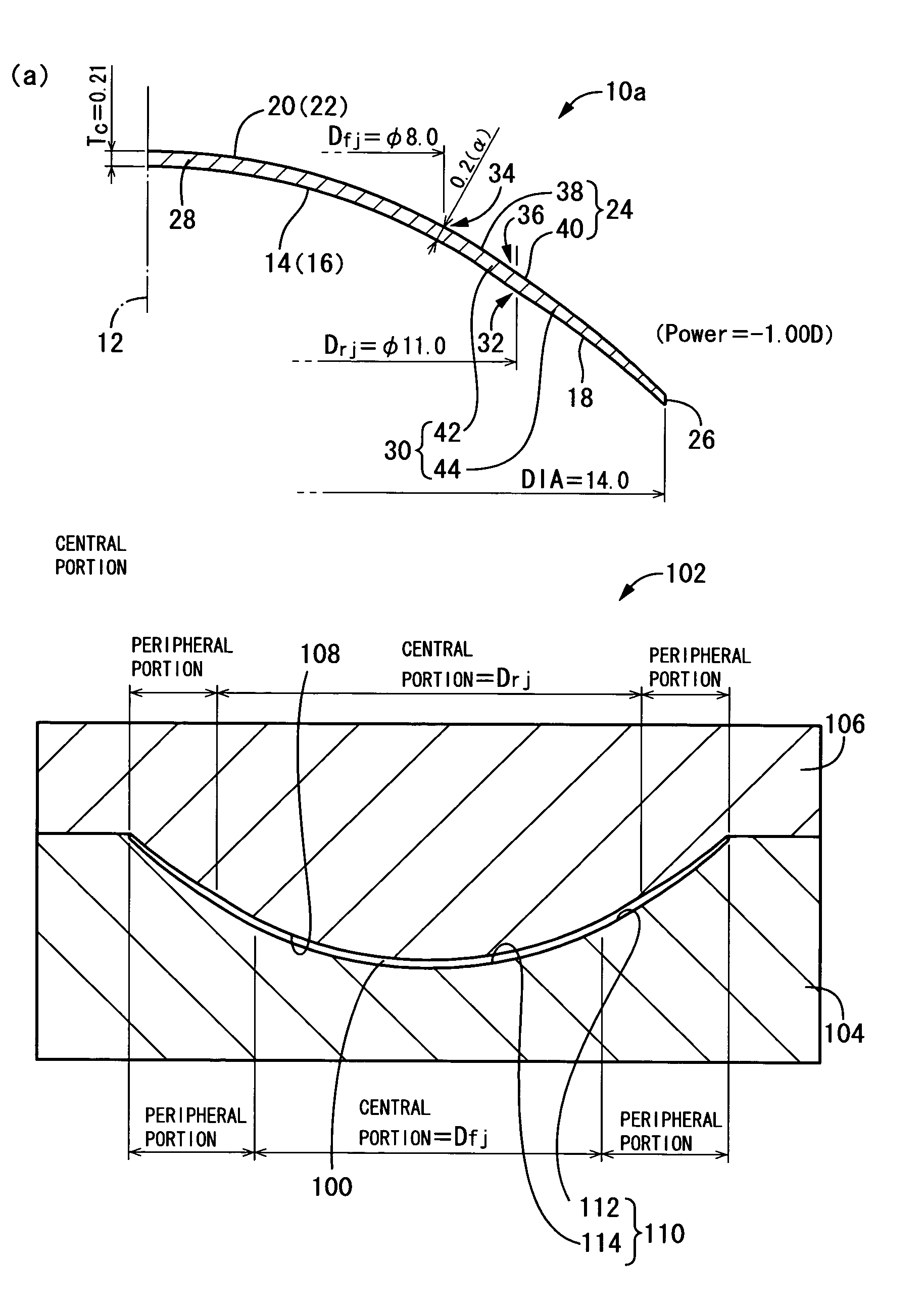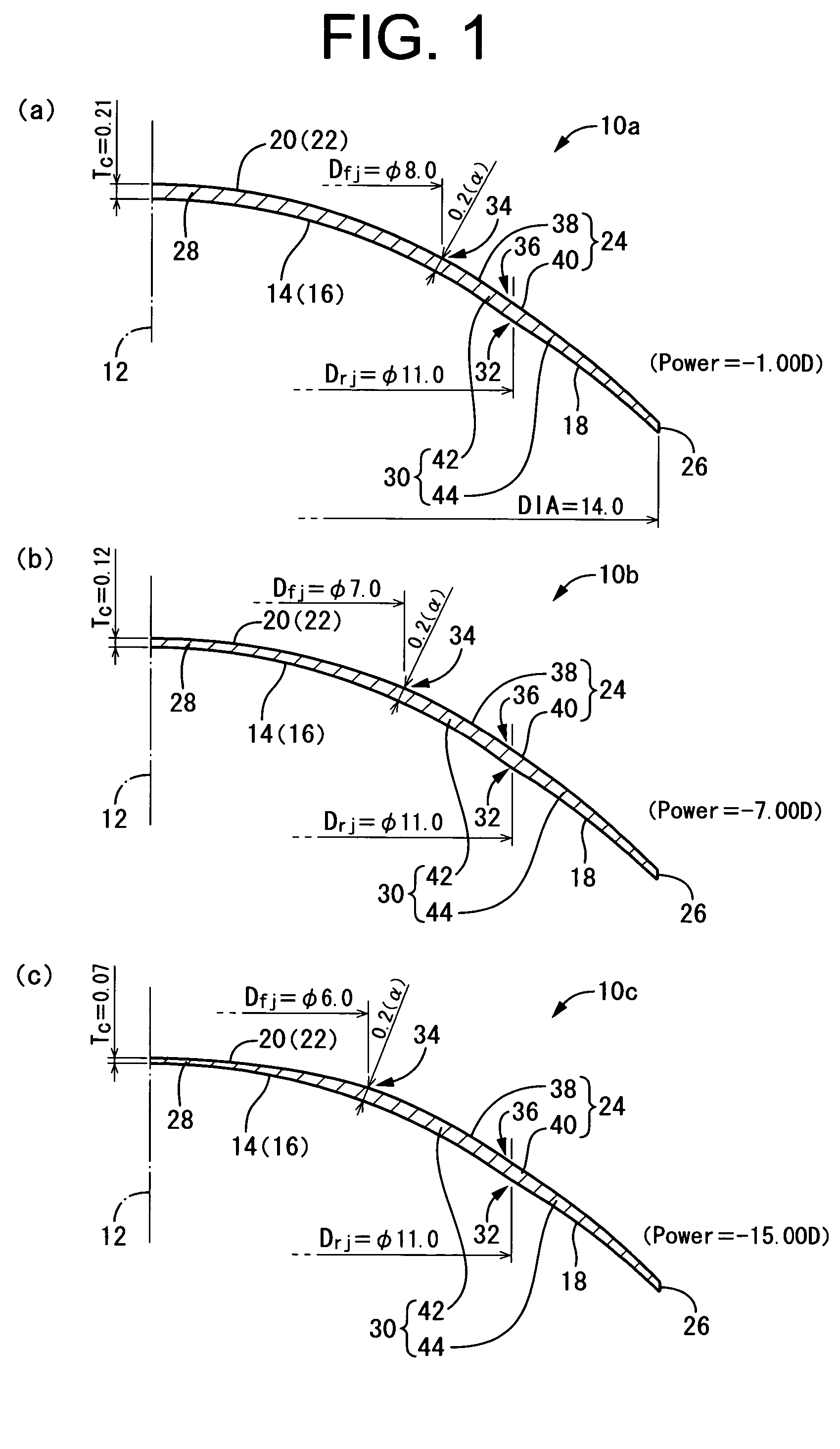Contact lens and production method for contact lens
a production method and contact lens technology, applied in the field of contact lenses, can solve the problems of difficult to distinguish the front from the back, tedious handling, and difficulty in designing and manufacturing contact lenses in a series, and achieve the effect of efficient manufacturing
- Summary
- Abstract
- Description
- Claims
- Application Information
AI Technical Summary
Benefits of technology
Problems solved by technology
Method used
Image
Examples
Embodiment Construction
[0049]In order to illustrate the invention more concretely, the embodiments of the invention are described in detail hereinbelow, making reference to the accompanying drawings.
[0050]FIGS. 1(a), (b), and (c) depict as one embodiment of the invention a plurality of contact lenses 10a, 10b, 10c selected appropriately from a series of contact lenses. The series contact lenses are composed of combinations of a plurality of contact lenses whose optical zones have mutually different optical characteristics, for example, different refractive power (diopter power), and are provided to the wearer through suitable selection, from among the plurality of contact lenses, of one contact lens having optical characteristics appropriate for the wearer. The selection is made on the basis of the results of an examination of the optical system of the eye of the wearer by an ophthalmologist or other examiner. Here, the contact lenses 10a, 10b, 10c which are constituent elements of a series of contact len...
PUM
 Login to View More
Login to View More Abstract
Description
Claims
Application Information
 Login to View More
Login to View More - R&D
- Intellectual Property
- Life Sciences
- Materials
- Tech Scout
- Unparalleled Data Quality
- Higher Quality Content
- 60% Fewer Hallucinations
Browse by: Latest US Patents, China's latest patents, Technical Efficacy Thesaurus, Application Domain, Technology Topic, Popular Technical Reports.
© 2025 PatSnap. All rights reserved.Legal|Privacy policy|Modern Slavery Act Transparency Statement|Sitemap|About US| Contact US: help@patsnap.com



